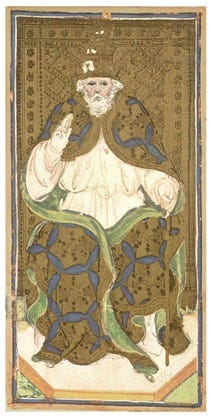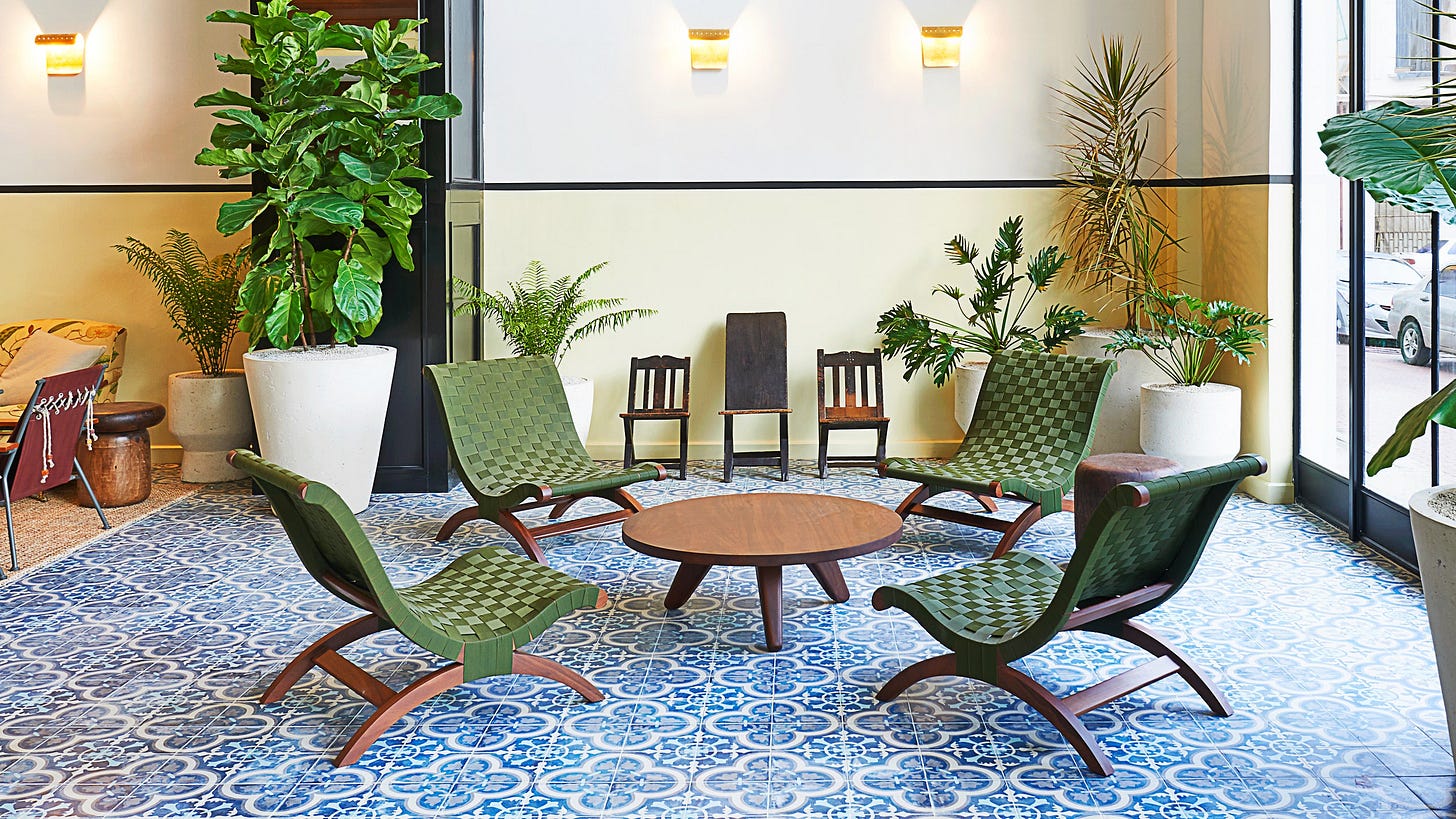This is the first in a series that highlights objects with designs so good we are getting a glimpse of the sacred right here on Earth1. This one is about my favorite accent chair.
In 2019, I stayed at the American Trade Hotel in the Casco Viejo neighborhood of Panama City.
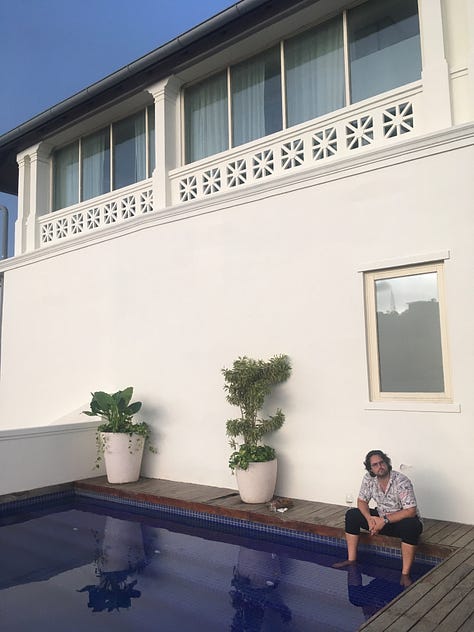

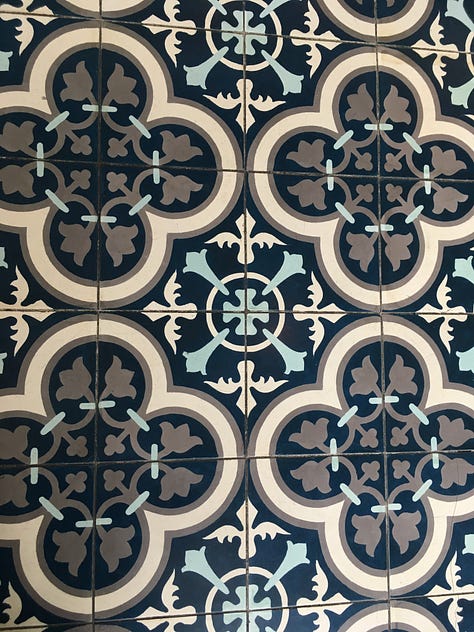
The hotel imparted such a strong sense of place that I started taking reference photographs so I could take some of these details home with me.2
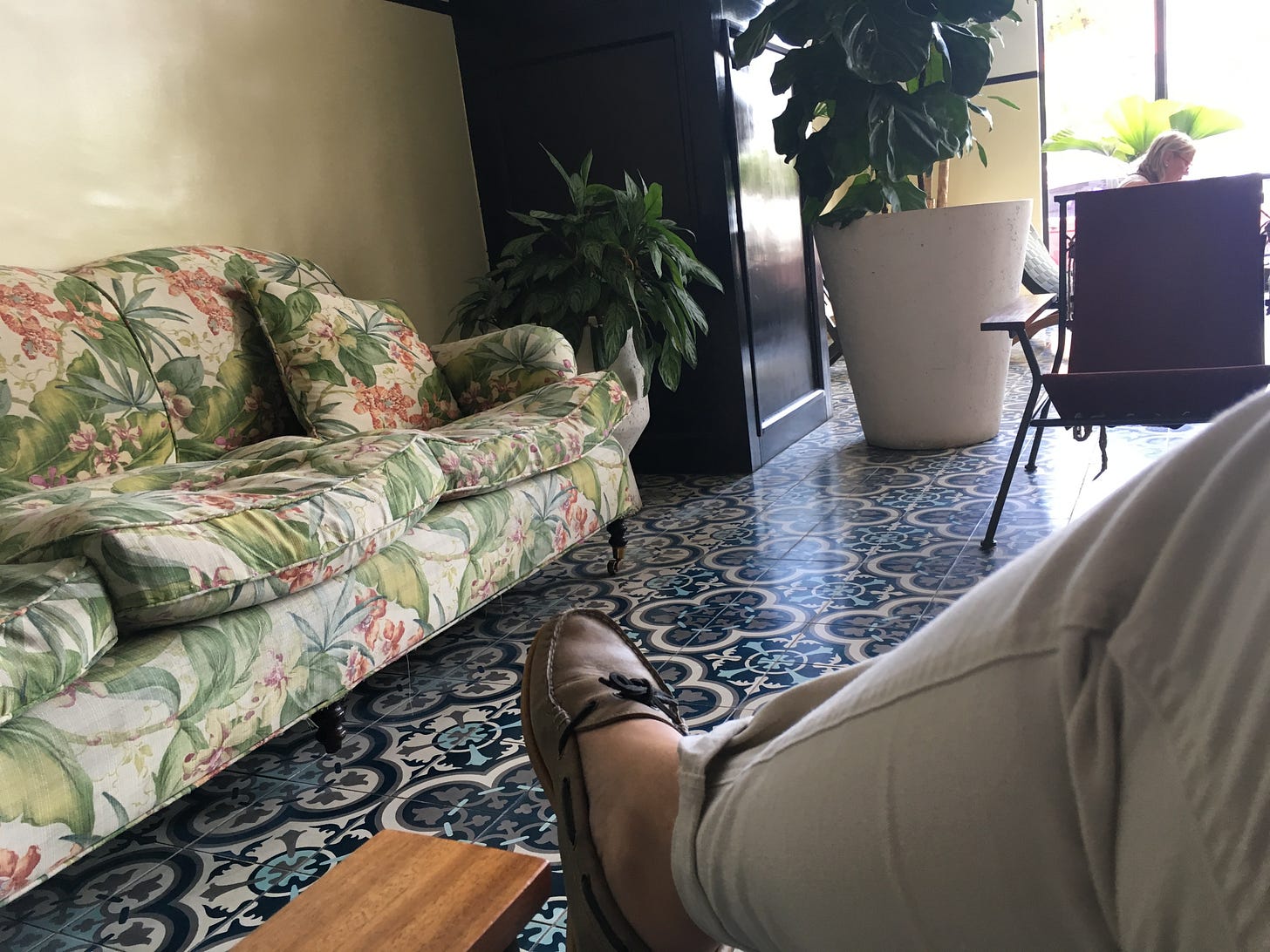
It wasn’t until checking out of the hotel that I noticed the lounge chairs in the lobby area. It wasn’t quite Stendahl Syndrome, but I found a lot of beauty radiating from what some might dismiss as just hotel lobby furniture. Once the aesthetic reveries had worn off, I wanted to learn more about these chairs (i.e., so that I could own some of them). In my defense, how often do you like something enough at first sight to want it in your home and look at it every day? Or how often do you even come across something that’s entirely new to you? We’re all saturated with design awareness now, with the expected flattening/convergence of everyone’s tastes towards an unremarkable middle, thanks in large part to our content diets (Instagram, the NYT weekend edition, the set designs of popular prestige television shows, and so forth, or whatever your version of these exact same things might be). Quite unexpectedly, here was an answer to the Ikea POÄNG (thoroughly good on its own terms, but not very comfortable) and the over exposed (albeit beautiful) Eames Lounge with Ottoman. Four years later, I’m still thinking (and now writing) about these chairs.
In my excitement and naïveté, I emailed the Los Angeles-based design firm that created these chairs after I got home, as though the megastars who created these beautiful chairs (which were being profiled in Architectural Digest) had nothing better to do than make some for me. As further proof of their talent and judgment, my email went unanswered.

The fluid lines, mixed materials and reclined posture were love at first sight, but the design story is what has kept this chair, a modern interpretation of the butaque, an obsession. One of the designers, Roman Alonso, grew up in Venezuela so there’s a high probability this form was chosen intentionally for its many layered connotations. Connotations which I’ll now attempt to unpack.3
How much symbolism can one piece of furniture carry? For the butaque, one can almost see the entire history of the West compressed into its elegant frame. In very rough chronological order, the chair (a) has its roots in the ancient Mediterranean (the Greeks, Egyptians and Romans all used versions of the x-base or hip-jointed chair as administrative/campaign furniture, unlike the Persians and its satellite cultures, who Wikipedia suggests favored the divan); (b) manifests itself in the fledgling medieval and then colonial regimes of Europe, where the French, Spanish and other empire builders knowingly used the chair as a symbol of authority (the Frankish kings purposely copied the Roman curule for their thrones to show continuation of governance, one of which was selected and repaired hundreds of years later for Napoleon’s coronation); (c) washes up in early post-revolution America by virtue of New Orleans’ position as a trading crossroads, where it essentially becomes relegated to the category of plantation furniture; (d) is then reclaimed/recontextualized by designers in the post-revolution era in Mexico and other countries to become an expression of unique New World, post-colonial cultural identity; and (e) more stuff happens in the ensuing post-war period, until it eventually shows up here in my very unnecessary Substack. If you want the rabbit hole version of the history as chronicled by professionals, I’ve gathered the articles here:

These chairs became such a significant sign of power in the Roman Republic that their use was confined to consuls, praetors, and, eventually, Roman emperors. The sella curulis evolved into an emblem of authority and majesty and can be found on coins, medals, and monuments of the age.
From Antiques magazine, something I hope is still in circulation; The American Campeche chair
Indeed, it was almost inevitable that when the Campeche form first reached American shores in the early nineteenth century, statesmen such as Jefferson and Madison would find its classical aspect fascinating. For these leaders, who were deliberately emulating the ancient prototype of Cincinnatus—the farmer called into the service of his nation as a soldier and ruler and then returning to his fields, resisting at all times the temptations of hereditary monarchy—the Campeche gave rest not just to their bodies, but to their democratic souls.
For the serious minded students of design, Designer Spotlight: Clara Porset & the Butaque Chair.
The butaque chair is an example of the mestizo culture in Mexico; it is a design that came from Mexico's Spanish conquerers and was adapted by local artisans to become a representation of Mexican nationalism.
Finally, and luckily for all of us, Mercedes Josefina Hernández Padilla has published a thesis paper concerning the chair (it looks like it came out in February, 2022, so it’s providence I waited so many years to attempt this survey of influences). An excerpt from The Butaque. From the colonial codices to the archetype of 20th century Mexican design echoes my fascination and frustration that there isn’t more out there about this chair (quick note that the paper available in English seems to be imperfectly translated):
[d]espite its significance, studies and publications about the Butaque have been limited, and neither about its origin, unlike other European or American origin seats; but its manufacture, use, typology, commercialization and even its exportation has been possible to trace until the late seventeenth century, in various regions of Mexico, the southern United States and in the Caribbean Islands.
The paper goes on to suggest a fascinating possibility. The butaque is widely accepted to be a hybridization of a pre-Columbus ritual seat (selected as one of the 100 objects in the BBC podcast A History of the World in 100 Objects) and the Spanish colonial chair, but some of the design features of the chair may also be derived in reverse from the 2-D drawings of conquistador chairs as depicted in the record keeping documents of the time:
Dr. Rivas bases the origin of the butaque on the reinterpretation of the tainian people ceremonial duho seat, and its diffusion from Venezuela to New Spain; The hypothesis here discussed presents the possibility of the origin in the rereading of the Mexican colonial codices, which were originally elaborated in the pictographic language resulting from the pre-Hispanic and Renaissance combination of representing reality, and the reinterpretation of these codices under a different drawing system and norms.
In other words, it’s possible this chair’s unique design language comes from builders making what they saw in their illustrated histories—a little bit like a furniture version of the bee orchid. We have examples of the actual chairs the Conquistadors used in museum collections around the world, but the interpretation/translation of the older chair’s ideas into the new form is what’s fascinating to me.

With all that in mind, what might the designers be saying by placing such chairs in the American Trade Hotel in Panama? It could be asking us to reflect on the Canal Zone, globalization and trade, or it could equally be a stealthy signifier for an audience that has imperialism and decolonization on the mind. Equally plausible (but less fun) is that it was chosen purely for the strong aesthetics. In any event, I’ll take two please.

So it’s a beautiful object freighted with deep historical, political and cultural significance. How does one actually go about acquiring one? The price point of these chairs certainly reflects their desirability. You can spend low five figures on antique examples, including some Clara Porset originals, or you can spend mid four figures on some very good replicas, like this Jefferson one available from the Monticello store, if you’re into that. I think the most interesting versions of these chairs embrace modernism and imbue them with a knowing kind of Pan-Pacific coolness, like these from Luteca. As Mercedes Josefina Hernández Padilla writes (again the version available to me is in an imperfectly translated English), the chair succeeds in part because it has been intentionally elevated and refined from an everyday chair to a design object that’s always in conversation with its own origins:
…designer and architects took a traditional and rural piece of furniture, that by reproducing and reinterpreting it in many ways, with different materials, techniques and better quality finishes, the butaque left its provincial and popular character to insert them self in the intellectual circles and "high society” residences; with this new category, it was set on the collective imaginary transcending throughout the 20th century…
While ranging across the internet to find others who share my love (or even awareness) of this chair, I found one individual on Reddit who made his own (I reached out to him to see if he ever made the matching ottoman, but did not receive a response). I also found (and purchased!) plans for making my own version—equal parts preposterous and alluring.

And so we move from the ideal forms of this chair to something more down to Earth. Short of making my own chair (and for clarity, I do not possess any of the skills or tools required), I think the Cuba chair from Design within Reach is a nice balancing of similar-enough looks for a reasonable price point (at a little over $1,000 per chair, maybe less if you find on the secondhand market or wait for their semi-annual sale, it’s relatively obtainable). It’s a silly place for me to end up after complaining about our flattening/converging design tastes (after all, DWR also sells the ubiquitous Eames Lounge with Ottoman), but it has the same woven padding I enjoy on the American Trade Hotel versions, and like the x-based chairs of antiquity, this one folds up. It’s marketed as indoor or outdoor, but it belongs in your best room (the one for drinks, music, books and reflecting on the folly of empire).
Postscript:
Here’s an Instagram account that just posts photos of chairs; maybe your perfect chair will just show up in your feed one day.
The concept of a hierophany is one I’ve lifted and misused from religious historian/scholar Mircea Eliade. Eliade’s Hierophanies occur where we see aspects of the sacred breaking into our lower plane of existence. You also see it referenced in The Hierophant card in tarot decks—representing the bridge between the divine and humanity. So it’s a hyperbole I use for things I love a bit too much.
I agree with much of the commentary floating around for summer, 2023 that people tend to travel too much (after all, you’re still you, and possibly miserable, while sitting on the beach in Greece or backpacking through Thailand). We’ve all lost our way a little bit in terms travel’s purpose. For my own part, I’ll just say traveling is more about curating and bringing back artifacts that I can work into my everyday life. This turns out to be a guiding principle for a mid-1700s English social club known as the Dilettanti—a group of individuals “…desirous of encouraging, at home, a taste for those objects which had contributed so much to their entertainment abroad…”
I’m an amateur. The word “dilettante” is in my author bio. Please bear that in mind in terms of my attempts to deconstruct the historical connotations of a chair and what it means to the cognoscenti of different design schools and cultures.




